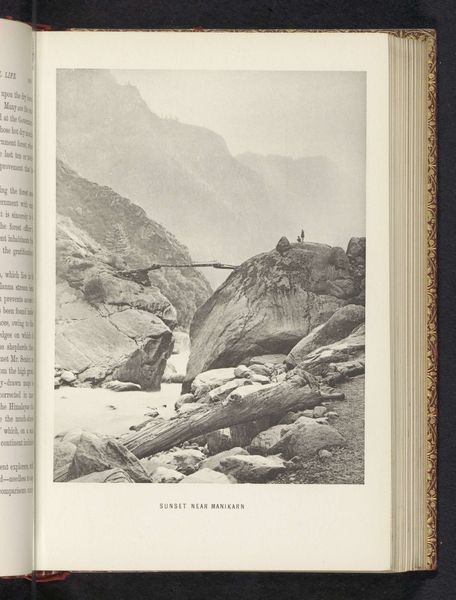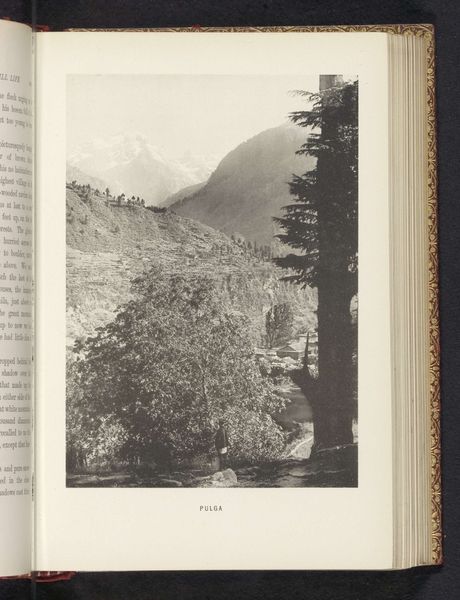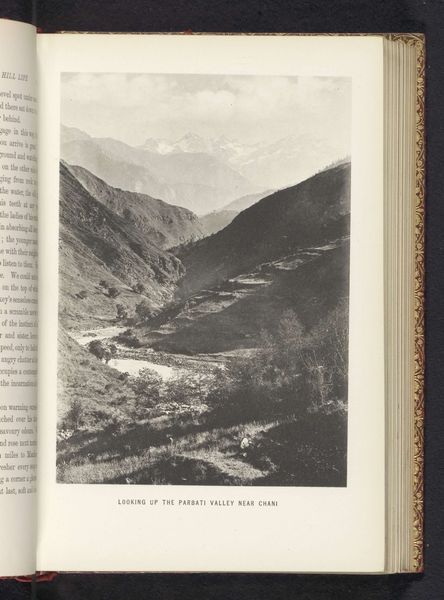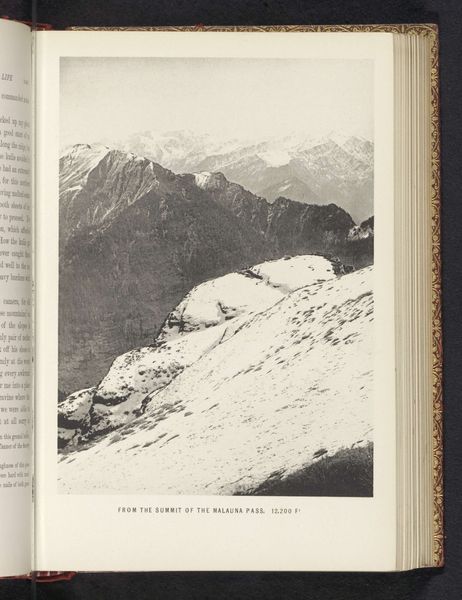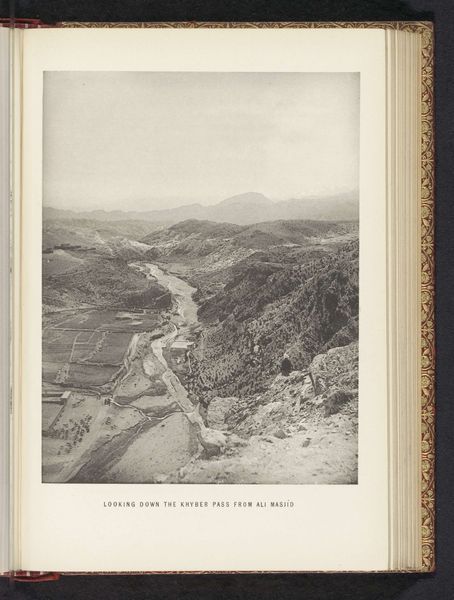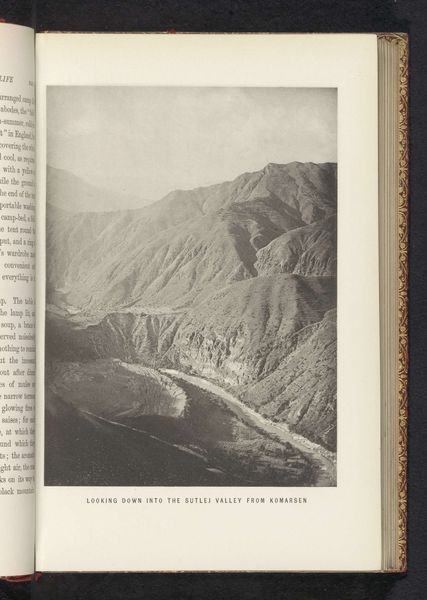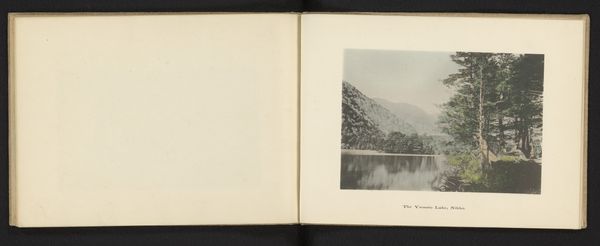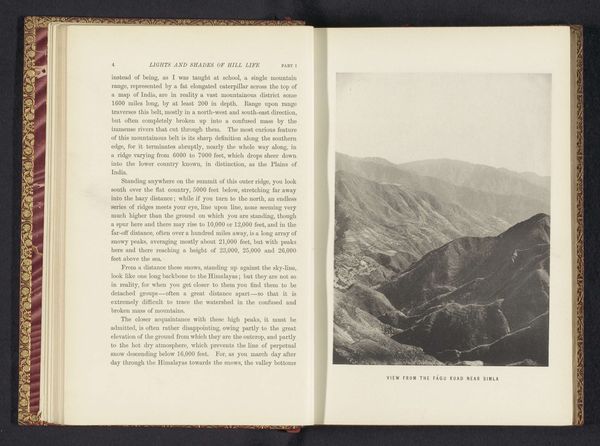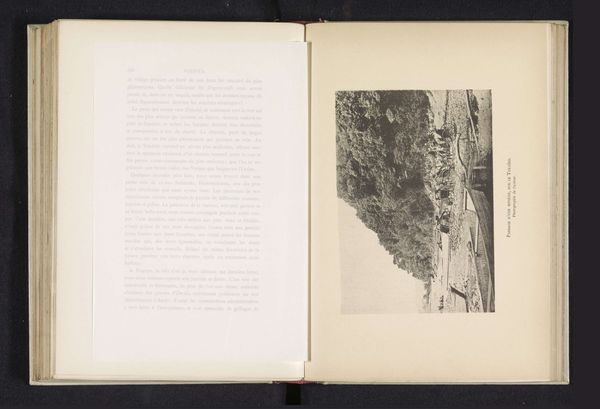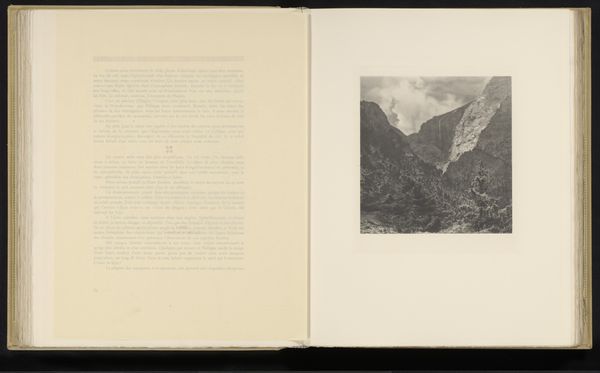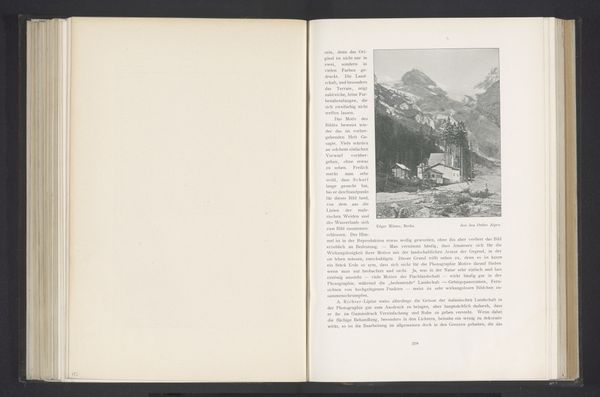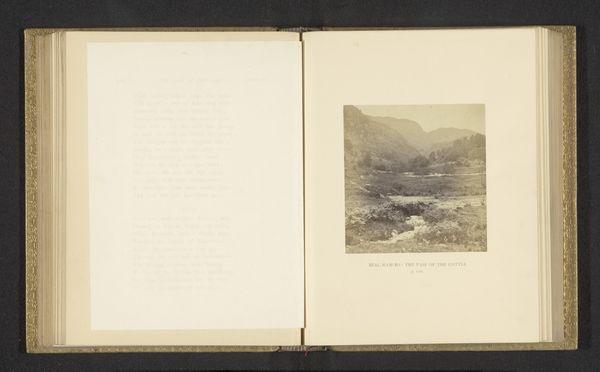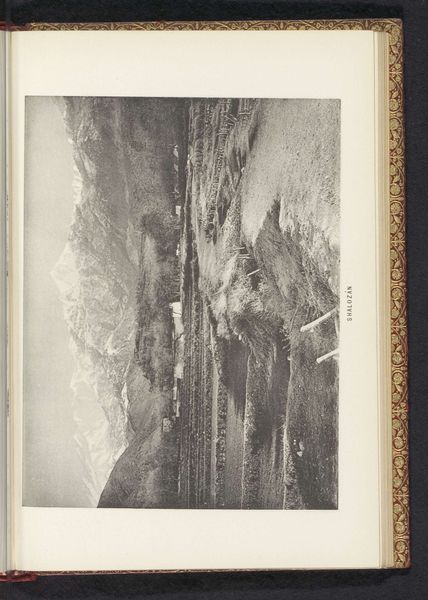
photography
#
still-life-photography
#
pictorialism
#
landscape
#
river
#
photography
Dimensions: height 158 mm, width 120 mm
Copyright: Rijks Museum: Open Domain
Curator: This evocative photograph is titled "Manikarn" and dates from before 1895. We attribute it to Frederick Saint John Gore. Editor: The mood it evokes is one of peaceful isolation, though there is also something inherently imposing, majestic in its verticality and scale. The gradation of light also pulls my eyes directly towards that winding river, dominating the frame. Curator: That pull you describe resonates when you think of Manikaran's Hindu and Sikh pilgrimage history, its thermal springs a site of spiritual purification—water almost always signals some symbolic gateway, a site of cleansing and rebirth across cultures. Editor: Speaking of elements, note how Gore employs a subtle range of tonalities within a monochrome palette. Observe the textures: the solid rock of the towering cliffs, the rushing, reflecting river, and those clustered houses huddled on the slope. It creates such textural depth and tonal complexity. Curator: Absolutely. The village becomes this humble signifier of human settlement nestled against geological immensity. Manikarn becomes more than a place, doesn't it? It encapsulates something enduring about human resilience within a divine creation. I cannot help thinking that it reveals aspects of how early photographers conceived the relation between "nature" and culture. Editor: I find it fascinating to observe how he handles depth of field here. The foreground feels crisp, allowing every detail to coalesce, while the distant hills seem to dissolve into a soft focus. I wonder what aperture or focal length produced this effect? The strategic use of this pictorialist style really gives the piece such an expressive quality. Curator: Exactly, there is intentional manipulation. Photography promised indexical accuracy but became instead, a powerful medium to reinforce both psychological and mythic geographies. Looking at this, I sense something about the intersection of human needs with spiritual practices enacted on the very land. Editor: Seeing this in person gives it added meaning beyond mere document; it prompts questions about intent, and, above all, its inherent beauty as photographic form.
Comments
No comments
Be the first to comment and join the conversation on the ultimate creative platform.
